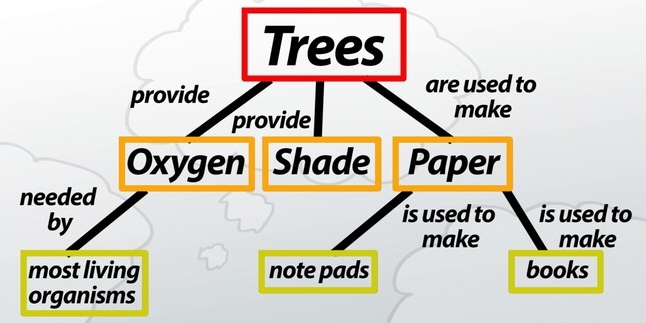e-Learning Ecologies MOOC’s Updates
Optional Update # 6: Concept Mapping
A concept map is a type of graphic organizer, which is used to help students organize and represent knowledge of a subject. Concept maps begin with a main idea or concept, and then branch out to show how the main idea can be broken down into specific topics.
Concept mapping is used as a learning and teaching technique, which visually illustrates the relationships between concepts and ideas. Often represented in circles or boxes, concepts are linked by words and phrases that explain the connection between the ideas, helping students organize and structure their thoughts to further understand information and discover new relationships.
Concept mapping helps students to brainstorm and generate new ideas, discover new concepts and the propositions that connect them, more clearly communicate ideas, thoughts and information, integrate new concepts with older concepts, gain enhanced knowledge of any topic and evaluate the information.
Concept maps are typically hierarchical, with the subordinate concepts stemming from the main concept or idea. This type of graphic organizer, however, always allows change and new concepts to be added. The Rubber Sheet Analogy states that concept positions on a map can continuously change, while always maintaining the same relationship with the other ideas on the map.
- Start with a main idea, topic, or issue to focus on: A helpful way to determine the context of your concept map is to choose a focus question—something that needs to be solved or a conclusion that needs to be reached. Once a topic or question is decided on, that will help with the hierarchical structure of the concept map.
- Determine the key concepts: Find the key concepts that connect and relate to your main idea and rank them; most general, inclusive concepts come first, then link to smaller, more specific concepts.
- Finish by connecting concepts—creating linking phrases and words: Once the basic links between the concepts are created, add cross-links, which connect concepts in different areas of the map, to further illustrate the relationships and strengthen student’s understanding and knowledge on the topic.
- Concept mapping is a powerful way for students to reach high levels of cognitive performance when created correctly and thoroughly. A concept map is also not just a learning tool, but an ideal evaluation tool for educators measuring the growth of and assessing student learning. As students create concept maps, they reiterate ideas using their own words and help identify incorrect ideas and concepts. Educators are able to see what students do not understand, providing an accurate, objective way to evaluate areas in which students do not yet grasp concepts fully.
For more information, refer to https://www.slideshare.net/bogeybear/types-of-concept-maps.
References
- Peter J. Hager, Nancy C. Corbin. Designing & Delivering: Scientific, Technical, and Managerial Presentations, 1997, 163.
- Joseph D. Novak & Alberto J. Cañas (2006). "The Theory Underlying Concept Maps and How To Construct and Use Them", Institute for Human and Machine Cognition. Accessed 24 Nov 2008.



Concept mapping, or mind mapping, is a wonderful tool to help students individually or in a small group pull together their metacognition of a topic into a visual structure. In so doing, students are able to capture the most important aspects of a topic and determine how they will fit into a final product. It's not only beneficial to students, but it was also helpful to the teacher who can see student thoughts, their process, and the order in which they put the various elements of a topic.